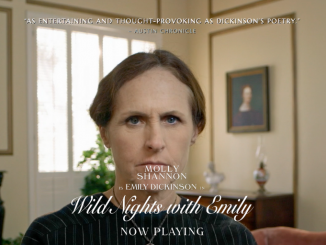
Over the years, Allied Artists has produced and distributed literally thousands of films, as well as records ranging from the likes of Elvis Presley and Liza Minnelli to Latin metal band Renegade. Though the company was one of the pioneers of talkies, it was also one of the first motion picture companies to release soundtrack records and produce cartoons. Today, Allied Artists finds itself parenting motion picture and television productions in collaboration with other studios, while remaining active in recorded music and music video productions. I had a sit down with Kim Richards, CEO and Co-Chairman of Allied Artists International, to discuss the company’s history, accomplishments and in particular, the direction of the company’s music division, Allied Artists Music Group.

Allied Artists Music Group is a division of Allied Artists International. Can you explain the history of both?
Kim Richards: The evolution of “Allied Artists” is complicated, but I was essentially head-hunted in the early 80’s by the founders of Allied Artists Records. I was working for CBS Records and they wanted someone to head their productions. I came in as Senior Vice President of Productions. Allied Artists Records was a wholly owned, but autonomous subsidiary of Allied Artists Pictures, which had been forced into bankruptcy as a result of the cost to release movies through the majors. For decades Allied Artists Pictures had been an independent film distributor, that literally made the calls to the theaters and delivered the prints on their own. As more and more theaters popped up around the country, they believed it would be more efficient to distribute through the machinery of the majors. That turned out to be a huge mistake as the cost of renting major distribution basically priced Allied Artists Pictures out of the distribution arena and into bankruptcy. Allied Artists Records, being entirely separate from Allied Artists Pictures was profitable and was the last man standing – the only remaining “Allied Artists.” Meanwhile, I was promoted up through the ranks and became president of Allied Artists Records. Because Allied Artists Records shared the “Allied Artists” trademarks, it effectively became the only “Allied Artists” in existence. Allied Artists Records acquired strategic pieces of Allied Artists Pictures’ intellectual property and expanded its trademark rights to include motion pictures and television. That brings us to Allied Artists International. Allied Artists Records had jumped into the film production fields as a natural extension of music videos and music related documentaries. With one end of the company producing music being released around the world and the other end producing movies also being released internationally, Allied Artists Records changed its name to Allied Artists International and formed two groups; Allied Artists Film Group and Allied Artists Music Group; both as divisions of Allied Artists International.
Focusing on Allied Artists Music Group, how did it grow to the size it is today?
KR: Well, you have to remember that Allied Artists Records was officially formed in 1971 but had operated as a part of Allied Artists Pictures since 1959. Therefore, the name “Allied Artists Records” was well-known and had a fairly robust roster of talent by the time Allied Artists Music Group was formed. That said, I credit much of the growth to Robert Fitzpatrick, who really stepped in and perfected a business model for the Music Group. Robert had been an entertainment lawyer for The Beatles and later co-managed The Bee Gees with Bob Stigwood. I had worked for RSO Records before moving to CBS Records and knew Robert (Fitzpatrick) from my time working with Andy Gibb. Robert was a music man from head to toe and I felt he would be a great fit to set a direction for the Music Group. Fortunately, we hit a grand slam with Robert. He not only grew the music group dramatically, but he was the architect of a reimagined distribution system for music and home video. Many were leery of what was sometimes called the “Fitzpatrick Plan.” Robert realized that the Music Group and the Film Group each had separate distribution networks that often overlapped. That meant separate marketing, separate promotion teams and separate relationships with both retail and wholesale outlets around the globe. Robert counter-intuitively proposed that we merge both the Music and Film Groups’ distribution lines as not only a cost-cutting measure, but to unite marketing and promotions teams as well as efficiency. Many music products were shipping through the exact same channels as our home video products. However, the merged efforts maximized sales into markets that had not previously been exploited. The end result was the creation of Allied Artists Music & Video Distribution that not only distributes the music group’s imprint products, but distributes for boutique record labels, affording them global distribution.

Where is Mr. Fitzpatrick today?
KR: In June of 2006, together with our board of directors, I chose to elevate Robert to president of the parent, Allied Artists International, where he made significant contributions at the corporate level. By that time, I was CEO and Chairman. We were exceptionally good friends and I’m sorry to say that Robert passed away in 2010, which was a huge loss for us.
Who took Mr. Fitzpatrick’s place at Allied Artists Music Group when he promoted up?
KR: Both Robert and I knew former managing director of Warner Bros. Records U.K., Stephan Bauer-Stace, who had an impressive history with such music icons as Led Zeppelin, The Rolling Stones and Jeff Beck. Among Robert’s first official duties as president of Allied Artists International, he named Stephan as his replacement. I was elated with the appointment, as Stephan’s background was the very direction I wanted to see the Music Group take. Stephan was a true record man, who was less organizational than Robert, but had a superb flare for creativity. He brought out the best in performing talent, promotional talent and public relations talent.
You’re speaking of Mr. Bauer in the past tense, is he no longer with the company?
KR: Following the loss of Robert, we suffered a one two punch with the passing of Stephan. We learned in November of 2015 that Stephan was fighting cancer. Following an emergency surgery, he took a leave of absence, although he did his best to coordinate from his hospital bed. A longtime friend of both mine and Stephan’s, John Velasco-Mills, who is a former head of United Artists Music U.K., and played a crucial role in the careers of Michael Jackson, ABBA, ELO, John Denver, Marvin Gaye and Davy Jones, just to name a few, stepped in to fill the void during Stephan’s absence. We all hoped Stephan would pull through, but sadly he passed away in June of 2016. With the loss of Stephan, I asked John (Velasco-Mills) to become the new president of the Music Group, which he did. John is literally the quintessential record man. He not only knows music with the best of them, but he’s forgotten more about publishing than anybody else in this business will ever know. We are very lucky to have John helming our Music Group.
Throughout the years, Allied Artists Music Group and its predecessor have boasted quite a roster, can you name some of the highlights?
KR: (Laughs) I don’t know about the highlights, but off the top of my head, throughout the years – many before my time – we’ve had Lionel Richie, Elvis Presley, Liza Minnelli, Joel Grey, Lawrence Welk, Bob Seger, and Ted Nugent. Allied Artists Records’ historical roster and catalog include Exodus, Coolio, Luis Cardenas, David Hasselhoff and Renegade. And, of course, we have Rocky Kramer making serious noise around the world today. Rocky is not only an incredible guitarist, along the lines of Yngwie Malmsteen, David Gilmour and Eddie Van Halen, but he has a five-octave vocal range that serves him well. I predict Rocky’s name will one day be uttered along with the likes of Clapton, Hendrix and Van Halen. That’s a big statement, but I’m comfortable uttering it.

What are your plans for Allied Artists International moving forward?
KR: We’re working to recapture our independent film distribution roots in terms of theatrical. Allied Artists’ history dates back to a company called Rayart Pictures that began in the mid-1920’s as an extremely independent production and distribution company. Rayart actually distributed during the silent era, later embracing technology and moving into “talkies.” In 1933 Rayart merged with Sono Art-World Wide Pictures to become Monogram Pictures. Producer Walter Mirisch then joined Monogram Pictures, later creating Allied Artists Productions, which finally changed its name to Allied Artists Pictures, with Monogram being relegated to an operating company under the Allied Artists umbrella, where it remains to this day. The business model that made the best sense for Allied Artists’ distribution was that of an independent distributor for small film producers. Low and micro budget films can’t afford to rent the major studio distribution system, but severely restrict the value of their film without a theatrical release. That’s where we come in. Through the efforts of our Co-Chairman, Mark Beychok, our Sr. Vice President of the film group, Rafi Bar and our Director of Film Distribution, Billie Feldman, we have revitalized our major theatrical distribution avenues. At present, we have nearly ten thousand screens throughout the United States and we’re moving into international markets now. Through our distribution network, the small filmmaker literally has the ability to compete with the big boys, at a fraction of the cost. Those are Allied Artists’ roots and we’re dedicated to the notion of putting creative quality products ahead of unconscionable profits. The same principles of catering to the small film producer apply equally to our music offerings.
The official website for Allied Artists International




Be the first to comment